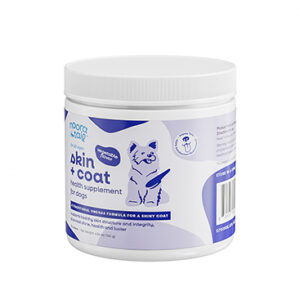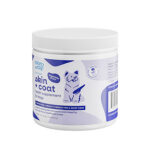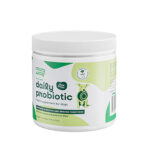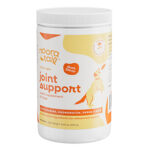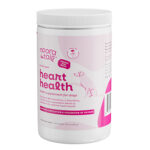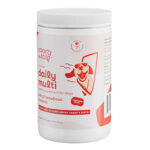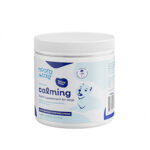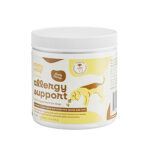How to Treat Dog Rash on Belly

Dog rashes on the belly are a common issue that can cause discomfort, irritation, and even pain in your furry friend. While some rashes may be minor and resolve on their own, others can indicate a more serious underlying condition that requires veterinary attention. In this article, we will provide a comprehensive guide on how to treat dog rash on belly, including causes, symptoms, diagnosis, treatment options, and home remedies.
Causes of Dog Rash on Belly
There are numerous potential causes of dog rash on belly, including:
- Allergies (food, environmental, contact)
- Parasites (fleas, ticks, mites)
- Bacterial or fungal infections
- Skin irritation (due to allergies, grooming, or friction)
- Endocrine disorders (such as Cushing’s disease)
- Autoimmune diseases
Symptoms of Dog Rash on Belly
Symptoms of dog rash on belly can vary depending on the underlying cause, but may include:
- Redness, inflammation, or swelling
- Itching or discomfort
- Hair loss
- Lesions, bumps, or blisters
- Scabs or crusts
- Discharge or crusting
Diagnosis of Dog Rash on Belly
To diagnose the cause of your dog’s belly rash, your veterinarian will likely perform a physical examination, review your dog’s medical history, and conduct any necessary tests. These tests may include:
- Skin scraping or cytology
- Fecal examination
- Blood tests
- Allergy testing
Treatment Options for Dog Rash on Belly
The treatment options for dog rash on belly will depend on the underlying cause.
- Allergies: If your dog’s rash is caused by an allergy, your veterinarian may recommend allergy testing to identify the specific allergen. They may also prescribe antihistamines or steroids to reduce inflammation and itching.
- Parasites: If parasites are the cause, your veterinarian will prescribe appropriate medications to kill the parasites.
- Bacterial or fungal infections: Antibiotics or antifungal medications will be prescribed to treat the infection.
- Skin irritation: If skin irritation is the culprit, your veterinarian may recommend topical treatments or lifestyle changes to address the underlying cause.
- Endocrine disorders: If an endocrine disorder is the cause, your veterinarian will prescribe medication or recommend other treatments to manage the underlying condition.
- Autoimmune diseases: Autoimmune diseases require specialized treatment, such as immunosuppressive drugs or corticosteroids.
Home Remedies for Dog Rash on Belly
In addition to veterinary care, there are some home remedies that may help soothe your dog’s belly rash:
- Oatmeal baths: Oatmeal baths can soothe and moisturize irritated skin.
- Aloe vera gel: Aloe vera gel has anti-inflammatory and antibacterial properties.
- Coconut oil: Coconut oil has antibacterial and anti-inflammatory properties.
- Baking soda paste: A paste made of baking soda and water can help dry out and reduce inflammation.
When to Seek Veterinary Care
If your dog’s belly rash is severe, does not improve with home remedies, or is accompanied by other symptoms such as lethargy, vomiting, or diarrhea, seek veterinary care immediately. These symptoms may indicate a more serious underlying condition that requires prompt medical attention.
Prevention of Dog Rash on Belly
While not all rashes can be prevented, there are some steps you can take to reduce the risk of your dog developing a belly rash:
- Regularly bathe your dog with a hypoallergenic shampoo.
- Keep your dog’s bedding and surroundings clean.
- Use flea and tick prevention products.
- Feed your dog a healthy diet.
- Avoid exposing your dog to potential allergens.
By understanding the causes, symptoms, and treatment options for dog rash on belly, you can help your furry friend get relief from this uncomfortable condition. Remember to always consult with your veterinarian for a proper diagnosis and treatment plan to ensure the best outcome for your dog.
Identify the Cause:

Dogs, our beloved companions, are prone to a variety of health concerns, including skin rashes. A rash on a dog’s belly can be a distressing and uncomfortable issue, requiring prompt attention and appropriate treatment.
Identifying the Cause
Before embarking on treatment, it is crucial to identify the underlying cause of the rash. Common causes include:
- Allergies: Dogs can develop allergies to food, environmental allergens such as pollen or dust, or flea saliva.
- Infections: Bacterial, fungal, or parasitic infections can result in skin rashes.
- Contact Dermatitis: This occurs when a dog’s skin comes into direct contact with an irritant, such as chemicals or plants.
Symptoms and Diagnosis
Depending on the cause, a dog with a belly rash may exhibit various symptoms, including:
- Redness and inflammation
- Itchiness and scratching
- Bumps, pustules, or scabs
- Hair loss
- Discomfort or pain
Diagnosing the cause of the rash involves a thorough physical examination by a veterinarian. A skin scraping or culture may be necessary to identify any underlying infections.
Treatment Options
Once the cause is determined, appropriate treatment can be initiated:
- Allergies: Identifying and avoiding the allergen is key. Antihistamines may be prescribed to reduce inflammation and itching.
- Infections: Antibiotics, antifungal medications, or antiparasitic treatments will be administered to combat the infection.
- Contact Dermatitis: Removing the irritant and soothing the skin with topical treatments, such as oatmeal baths or hydrocortisone cream, is recommended.
Home Care and Prevention
In addition to veterinary care, implementing proper home care measures can aid in the healing process:
- Keep the Area Clean: Regularly bathe your dog with a gentle shampoo and ensure the belly area is thoroughly dried.
- Use Topical Treatments: Apply prescribed topical creams or ointments according to the veterinarian’s instructions.
- Prevent Scratching: Consider using an Elizabethan collar or cone to prevent your dog from exacerbating the rash by scratching.
- Moisturize: Apply a moisturizing lotion or coconut oil to soothe and protect the skin.
Monitoring and Follow-Up
Monitor your dog’s response to treatment closely. If the rash worsens, changes in appearance, or does not improve with treatment, seek immediate veterinary advice. Regular follow-up appointments are essential to ensure the rash is healing properly and to prevent complications.
Prevention
- Maintain a balanced diet to minimize allergies.
- Keep your dog away from potential allergens and irritants.
- Use flea and tick control products to prevent any flea-related issues.
- Regularly inspect your dog’s skin for any signs of infection or irritation.
Conclusion
A rash on a dog’s belly can be a common and distressing problem. Understanding the underlying cause and implementing appropriate treatments is vital for effective management. By working closely with your veterinarian and adhering to home care measures, you can help your furry friend find relief and restore their skin’s health. Remember, early detection and prompt treatment are key to preventing discomfort and ensuring your dog’s well-being.
Clean the Area:

As a devoted dog pet blogger, it’s essential to understand and address the health concerns that may arise with our furry companions. Dog rashes on the belly are a common issue that can cause discomfort and irritation for your beloved pet. In this comprehensive guide, we will explore the causes, symptoms, and effective treatment options for dog rash on belly, empowering you with the knowledge and tools to ensure your dog’s well-being.
Causes of Dog Rash on Belly
Various factors can contribute to the development of a rash on a dog’s belly, including:
- Allergies: Allergies to food, environmental allergens (such as pollen or dust), and even certain fabrics can trigger skin irritation and rashes.
- Bacterial and Fungal Infections: Bacterial or fungal infections can cause the skin to become red, inflamed, and itchy.
- Parasites: Fleas, mites, and other parasites can cause intense itching and irritation, leading to rash formation.
- Contact Dermatitis: Exposure to certain irritants, such as chemicals, soaps, or plants, can result in contact dermatitis, characterized by redness, swelling, and itching.
- Food Intolerance: Sensitivity to certain ingredients in a dog’s diet can manifest as a rash on the belly.
- Environmental Factors: Excessive heat, cold, or humidity can lead to skin irritation and the development of rashes.
Symptoms of Dog Rash on Belly
Recognizing the symptoms of a rash on your dog’s belly is crucial for timely diagnosis and treatment. Common signs include:
- Redness, swelling, and inflammation
- Itching and scratching
- Dry, scaly, or flaky skin
- Hotspots (moist, irritated areas)
- Scabs or crusts
- Loss of fur
Home Remedies for Dog Rash on Belly
Mild rashes can often be treated with home remedies, provided that the underlying cause is not severe or infectious. Here are some home care measures you can try:
1. Oatmeal Bath: Oatmeal has soothing and anti-inflammatory properties that can relieve itching and irritation. Grind oatmeal into a fine powder and add it to lukewarm bathwater. Allow your dog to soak for 10-15 minutes, then rinse thoroughly.
2. Coconut Oil: Coconut oil is known for its antimicrobial and moisturizing effects. Apply a thin layer of coconut oil to the affected area several times a day to soothe and protect the skin.
3. Aloe Vera: Aloe vera has cooling, anti-inflammatory, and healing properties. Extract the gel from an aloe vera leaf and apply it directly to the rash. Avoid using products with added ingredients that could irritate your dog’s skin.
4. Baking Soda Paste: Baking soda can help neutralize pH levels and reduce inflammation. Create a paste by mixing baking soda with water and applying it to the rash. Leave it on for 10-15 minutes before rinsing.
5. Clean the Area: Gently clean the affected area with a mild antiseptic solution or antibacterial soap. Avoid using harsh chemicals or scrubbing.
6. Topical Creams: Over-the-counter topical creams containing hydrocortisone or calamine can provide temporary relief from itching and inflammation. Follow the instructions on the product label carefully.
Veterinary Treatment Options
If home remedies do not improve the condition of the rash or if the rash is severe, it’s essential to seek veterinary care. Your veterinarian will examine your dog, identify the underlying cause, and recommend the appropriate treatment.
1. Antibiotics or Antifungal Medications: If the rash is caused by a bacterial or fungal infection, your veterinarian will prescribe antibiotics or antifungal medications.
2. Antihistamines: Antihistamines can help block the release of histamine, a compound that causes itching and inflammation.
3. Flea and Tick Prevention: If fleas or ticks are the cause of the rash, your veterinarian will recommend a flea and tick prevention plan.
4. Dietary Changes: If food intolerance is suspected, your veterinarian may recommend a hypoallergenic diet to eliminate potential triggers.
Prevention of Dog Rash on Belly
Preventing dog rash on belly is the best way to ensure your dog’s comfort and health. Here are some preventive measures you can implement:
- Keep your dog’s living environment clean and free of potential irritants.
- Maintain a balanced diet that meets your dog’s nutritional needs.
- Regularly groom your dog to remove loose fur and prevent parasites.
- Use pet-friendly products for bathing and grooming.
- Protect your dog from extreme temperatures and humidity.
- Monitor your dog closely for any signs of allergies or skin irritation.
By following these recommendations and paying attention to your dog’s health, you can help prevent the development of dog rash on the belly and ensure your furry companion’s overall well-being. Remember, if you have any concerns or if your dog’s rash persists or worsens, do not hesitate to seek professional veterinary advice.
Apply Topical Medication:

Dog rashes can be an uncomfortable and bothersome issue for both dogs and their owners. When a dog develops a rash on its belly, it can lead to irritation, itching, and pain. Fortunately, there are effective treatments available to relieve the discomfort and restore your dog’s skin health.
Identifying the Cause of Belly Rash
The first step in treating a dog rash on the belly is to identify its cause. Common causes include:
- Allergies: Dogs can develop allergies to various substances, such as food, pollen, or insects. These allergies can trigger inflammation and rashes on the skin.
- Infections: Bacterial or fungal infections can cause skin rashes on the belly. These infections can spread and become more severe if left untreated.
- Parasites: Fleas, ticks, and mites can cause intense itching and skin irritation. Infestations can lead to rashes and other skin problems.
- Dietary issues: Dogs with sensitive stomachs or food allergies may experience digestive upset that can manifest as skin rashes on the belly.
- Environmental irritants: Harsh chemicals, plants, or certain materials can irritate a dog’s skin and cause rashes.
Treatment Options for Belly Rash
The specific treatment for a dog rash on the belly will depend on the underlying cause. Common treatment options include:
1. Addressing Allergies:
- Eliminate known allergens: If the rash is caused by a known allergen, avoiding exposure is crucial. This may involve changing your dog’s diet, limiting their contact with certain substances, or taking allergy medications as prescribed by your veterinarian.
- Antihistamines: Antihistamines can help reduce itching and inflammation associated with allergies.
2. Treating Infections:
- Antibiotics: Bacterial infections are typically treated with antibiotics, which are prescribed by your veterinarian.
- Antifungals: Fungal infections require antifungal creams or medications.
3. Controlling Parasites:
- Flea and tick control: Regularly treat your dog with flea and tick prevention products.
- Medicated baths: Medicated baths can help kill parasites and relieve skin irritation.
4. Managing Dietary Issues:
- Hypoallergenic diet: If your dog has food allergies, switch to a hypoallergenic diet recommended by your veterinarian.
- Probiotics: Probiotics can help improve gut health and reduce digestive issues that may contribute to skin rashes.
5. Topical Medications:
- Antibiotic or antifungal cream: If the rash is caused by a bacterial or fungal infection, apply a topical antibiotic or antifungal cream as prescribed by your veterinarian.
- Aloe vera: Aloe vera gel can soothe inflamed skin and reduce itching.
- Oatmeal baths: Oatmeal baths have anti-inflammatory properties that can relieve skin irritation.
6. Protective Measures:
- Elizabethan collar: To prevent your dog from licking or scratching the rash, use an Elizabethan collar.
- Bandages: If necessary, cover the rash with a bandage to protect it from further irritation.
Preventing Belly Rash
Preventing dog rash on the belly is always preferable to treating it. Here are some preventive measures:
- Keep your dog clean and well-groomed.
- Avoid harsh chemicals or irritants.
- Feed your dog a healthy and balanced diet.
- Regularly inspect your dog for any signs of skin problems.
- Consult your veterinarian promptly if you notice any skin rashes or irritation.
Conclusion
Dog rashes on the belly can be a nuisance for your furry friend. By understanding the potential causes and seeking appropriate treatment, you can effectively alleviate the discomfort and restore your dog’s skin health. Remember, it’s always advisable to consult with your veterinarian for the most accurate diagnosis and personalized treatment plan for your dog.
Use Colloidal Oatmeal Baths:

Dogs, like humans, are prone to various skin conditions, including rashes. A rash on a dog’s belly can be unsightly and uncomfortable for your furry friend. Understanding the causes of a rash and implementing effective treatment strategies is crucial to restoring your dog’s comfort and well-being.
Causes of Dog Rash on Belly
The causes of rashes on a dog’s belly can be diverse, ranging from environmental factors to underlying medical conditions. Some common causes include:
- Allergies: Allergies to food, environmental triggers like pollen, or contact with irritants can cause rashes.
- Parasites: Fleas, ticks, and mites can bite the dog’s skin, leading to rashes and itching.
- Bacterial or Fungal Infections: Bacterial or fungal infections can cause inflammation and irritation that manifest as rashes.
- Contact Dermatitis: Contact with harsh chemicals, soaps, or plants can irritate the dog’s skin.
- Anxiety and Stress: Some dogs may develop rashes due to anxiety or excessive licking.
- Underlying Medical Conditions: Certain medical conditions, such as Cushing’s disease or hypothyroidism, can also lead to skin rashes.
Effective Treatment Options
Treating a dog rash on the belly requires a multifaceted approach that addresses the underlying cause and provides relief from discomfort. Here are some effective treatment options:
-
Veterinary Consultation: The first step is to consult your veterinarian to determine the cause of the rash and recommend the most appropriate treatment plan.
-
Topical Treatments:
-
Colloidal Oatmeal Baths: Colloidal oatmeal has soothing and anti-inflammatory properties that can help relieve itching and irritation. Soak your dog in an oatmeal bath for 10-15 minutes, then rinse and pat dry.
- Hydrocortisone Cream: Over-the-counter hydrocortisone cream can help reduce inflammation and itching. Apply a thin layer to the affected area, following the instructions on the package.
- Antibiotic Cream: If the rash is caused by a bacterial infection, your veterinarian may prescribe an antibiotic cream.
-
Antifungal Cream: If the rash is caused by a fungal infection, your veterinarian may prescribe an antifungal cream.
-
Oral Medications:
-
Antibiotics: If the rash is caused by a bacterial infection, your veterinarian may prescribe antibiotics.
- Antifungals: If the rash is caused by a fungal infection, your veterinarian may prescribe antifungals.
-
Antihistamines: If the rash is caused by allergies, your veterinarian may prescribe antihistamines to block the effects of histamine, which triggers itching.
-
Lifestyle Modifications:
-
Identify and Avoid Allergens: If the rash is caused by allergies, identify and avoid potential allergens. This may involve switching to a hypoallergenic diet or using unscented cleaning products.
- Provide a Stress-Free Environment: If the rash is caused by anxiety or stress, try to create a stress-free environment for your dog. This may involve providing a safe space, interactive toys, and regular exercise.
- Use Hypoallergenic Products: Use unscented, hypoallergenic shampoos and conditioners to avoid further irritation.
Prevention is Key
Preventing dog rashes on the belly is always preferable to treating them. Here are some preventive measures:
- Regular Grooming: Brush your dog regularly to remove loose hair, dirt, and potential allergens.
- Parasite Control: Use flea and tick prevention products as recommended by your veterinarian.
- Dietary Management: Feed your dog a balanced, high-quality diet to support overall health.
- Avoid Harsh Chemicals and Plants: Keep your dog away from harsh chemicals and potentially irritating plants.
- Environmental Control: Regularly clean your dog’s bedding and living areas to prevent the accumulation of allergens or irritants.
Remember, if you notice your dog has a rash on its belly, it’s crucial to consult your veterinarian promptly. With proper diagnosis and treatment, your furry friend can regain comfort and well-being.
Keep the Area Dry:
As dog owners, we shower our furry companions with love and care, but even the most well-groomed pups can occasionally develop a pesky skin irritation. Rashes on the belly can be particularly uncomfortable for dogs, making them irritable and scratching incessantly. Understanding the causes and effective treatments can help you provide prompt relief to your canine friend.
Identifying the Root Cause
Before treating the rash, it’s crucial to determine the underlying cause. Common culprits include:
- Allergies: Food allergies, environmental allergens, and even insect bites can trigger allergic reactions on the skin.
- Bacterial or Fungal Infections: Skin infections can cause redness, itching, and discomfort.
- Parasites: Fleas, ticks, and mites can irritate the skin, leading to rashes.
- Hot Spots: These painful, itchy lesions develop due to excessive scratching or rubbing.
- Skin Fold Dermatitis: Dogs with excessive skin folds can develop rashes due to moisture buildup.
Effective Treatments
Once the cause is identified, you can administer appropriate treatments to alleviate your dog’s discomfort:
- Antihistamines: These medications help reduce allergic reactions and itching. Consult your veterinarian for proper dosage.
- Antibiotics or Antifungals: If the rash is caused by an infection, your veterinarian may prescribe antibiotics or antifungal medications.
- Parasitic Control: Regular flea and tick prevention can prevent and treat rashes caused by parasites.
- Skin Cleansers: Oatmeal-based shampoos and medicated wipes can soothe the irritated skin.
- Topical Creams or Ointments: Over-the-counter or prescription creams and ointments can help reduce inflammation and itching.
Additional Care Tips
In addition to medical treatments, follow these care tips:
- Keep the Area Dry: Keep the rash area clean and dry. Use a clean towel to gently pat the area after bathing or cleaning.
- Prevent Scratching: Cover the rash with a bandage or cone collar to prevent your dog from scratching it, which can worsen the irritation.
- Avoid Harsh Products: Use gentle, fragrance-free products on the affected area to minimize further irritation.
- Moisturize: Apply a thin layer of hypoallergenic moisturizer to keep the skin hydrated.
When to Seek Veterinary Attention
Most dog belly rashes can be treated at home, but if your dog exhibits any of the following symptoms, seek veterinary attention immediately:
- Persistent itching or discomfort
- Open sores or discharge
- Swelling or redness that spreads beyond the rash
- Fever or lethargy
- Loss of appetite
- Difficulty breathing
Conclusion
Dog belly rashes can be distressing for both you and your furry companion. By understanding the causes and implementing effective treatments, you can alleviate discomfort and restore your dog’s skin health. Always remember to monitor the rash and seek veterinary assistance if necessary. With a little care and attention, you can help your dog feel happy and comfortable once again.
Protect from Licking:
Dog rashes are a common skin problem that can cause discomfort, itching, and irritation. While some rashes are minor and resolve on their own, others can be more severe and require veterinary attention. If your dog has a rash on its belly, it’s important to identify the cause and treat it promptly to prevent further discomfort and complications.
Causes of Dog Rash on Belly
There are several potential causes of dog rash on belly, including:
- Allergies: Environmental allergens, such as pollen, dust, and dander, can trigger allergic reactions that manifest as rashes.
- Bacterial or Yeast Infections: Bacteria and yeast can overgrow on the skin, leading to rashes and inflammation.
- Parasites: Parasites, such as mites and scabies, can burrow into the skin, causing itching and rashes.
- Skin Conditions: Certain skin conditions, such as eczema and psoriasis, can cause rashes on the belly and other parts of the body.
- Hormonal Imbalances: Hormonal imbalances, such as hypothyroidism, can lead to skin problems, including rashes.
Symptoms of Dog Rash on Belly
The symptoms of a dog rash on belly can vary depending on the cause. However, common symptoms include:
- Redness: The skin may appear red and inflamed.
- Itching: The dog may experience intense itching and scratching.
- Crusting or scaling: The skin may become crusty or scaly.
- Pus or drainage: Bacterial infections may lead to pus or drainage.
- Hair loss: The rash may cause hair loss in the affected area.
Treatment for Dog Rash on Belly
The treatment for a dog rash on belly will depend on the underlying cause. Here are some general steps to follow:
-
Identify the Cause: Determine the underlying cause of the rash to ensure appropriate treatment. This may involve a physical exam and medical tests.
-
Cleanse the Area: Gently clean the affected area with a mild antiseptic solution or dog-specific shampoo.
-
Apply Topical Medications: Antibiotic or antifungal creams or ointments may be prescribed to treat bacterial or yeast infections.
-
Oral Medications: Oral antibiotics or antihistamines may be prescribed to treat more severe infections or allergic reactions.
-
Protect from Licking: Prevent your dog from licking the rash, as this can worsen the condition. Consider using an Elizabethan collar.
-
Regular Monitoring: Monitor the rash closely and follow your veterinarian’s instructions for care.
-
Dietary Modifications: If allergies are suspected, dietary modifications may be necessary to eliminate potential allergens.
-
Regular Grooming: Regular bathing and brushing can help remove allergens and keep the skin clean.
Preventing Dog Rash on Belly
While not all rashes can be prevented, there are some measures you can take to reduce the risk of your dog developing a rash on its belly:
- Control Allergies: Identify and avoid potential allergens to prevent allergic reactions.
- Keep the Skin Clean: Regular bathing and grooming can help remove dirt and allergens from the skin.
- Treat Parasites Regularly: Use parasite prevention products, such as flea and tick treatments, to prevent infestations.
- Maintain a Healthy Diet: Feed your dog a balanced and nutritious diet to support its overall health and immune system.
- Regular Veterinarian Checkups: Regular veterinary checkups allow your veterinarian to assess your dog’s skin health and identify any potential problems early on.
By following these steps, you can help treat and prevent dog rash on belly, ensuring your pet’s comfort and well-being. If your dog’s rash persists, worsens, or is accompanied by other symptoms, it’s important to seek veterinary attention promptly.
Monitor the Rash:
A rash on your dog’s belly can be a common and uncomfortable issue. It can cause itching, redness, and discomfort for your furry friend. While there are many potential causes of a dog rash, such as allergies, infections, or parasites, it is crucial to identify the underlying cause to provide effective treatment and prevent further irritation or infection.
Common Causes of Dog Rash on Belly:
- Allergies: Skin contact with allergens like pollen, dust, or certain fabrics can trigger allergic reactions, leading to rashes.
- Yeast infections: An overgrowth of yeast on the skin, usually related to moisture or immune system issues, can cause red, itchy, and odorous rashes.
- Bacterial infections: These can occur when bacteria enter through broken skin or from underlying health conditions, leading to pus-filled or crusty rashes.
- Parasites: Mites, fleas, or ringworms can infest the skin, causing irritation and rashes.
- Heat rash: Excessive heat or humidity can result in blocked sweat glands, leading to a rash with small red bumps.
Steps to Treat Dog Rash on Belly:
1. Identify the Cause: Determine the underlying cause of the rash to guide appropriate treatment. Consult your veterinarian for a diagnosis.
2. Clean and Dry the Area: Use a gentle, hypoallergenic shampoo to clean the affected area. Rinse thoroughly with lukewarm water and pat dry with a clean towel.
3. Apply Topical Medications: Veterinary-approved topical medications, such as antihistamines or antibacterial creams, can reduce inflammation, itching, and infection. Follow the instructions on the product label carefully.
4. Use Anti-Itch Sprays: These sprays can provide temporary relief from itching and help prevent your dog from scratching the rash and worsening it.
5. Provide a Cool and Comfortable Environment: Avoid exposing your dog to extreme temperatures or humidity. Keep them in a cool and dry area to reduce discomfort.
6. Restrict Activities: Limit your dog’s physical activity to minimize friction on the affected area and prevent further irritation.
7. Consider Dietary Changes: If allergies are suspected, consult with your veterinarian about eliminating potential allergens from your dog’s diet.
8. Monitor the Rash: Observe the rash regularly for signs of improvement or worsening. If the rash persists or shows signs of infection, consult your veterinarian.
Additional Tips:
- Use Elizabethan Collar: To prevent your dog from licking or scratching the rash, consider using an Elizabethan collar or a T-shirt to protect the area.
- ** Oatmeal Baths:** Soaking your dog in a lukewarm oatmeal bath can soothe the skin and reduce itching. Grind oatmeal into a fine powder and add it to the water.
- Aloe Vera Gel: Applying pure aloe vera gel to the rash can help reduce inflammation and promote healing.
- Coconut Oil: Coconut oil has antibacterial and antifungal properties that can help treat certain types of skin infections. Apply it sparingly to the rash.
Preventing Dog Rash on Belly:
- Groom your dog regularly to remove allergens, prevent mats, and detect skin issues early.
- Ensure your dog receives regular flea and tick treatments.
- Keep your dog’s bedding and living areas clean and free of potential allergens.
- Provide a balanced and nutritious diet to support your dog’s immune system.
- Monitor your dog for any signs of allergies or skin problems and seek veterinary attention promptly.
By following these steps, you can effectively treat your dog’s rash on belly and provide them with the comfort and relief they deserve. Remember to consult with your veterinarian for an accurate diagnosis and guidance on the most appropriate treatment plan for your furry companion.









